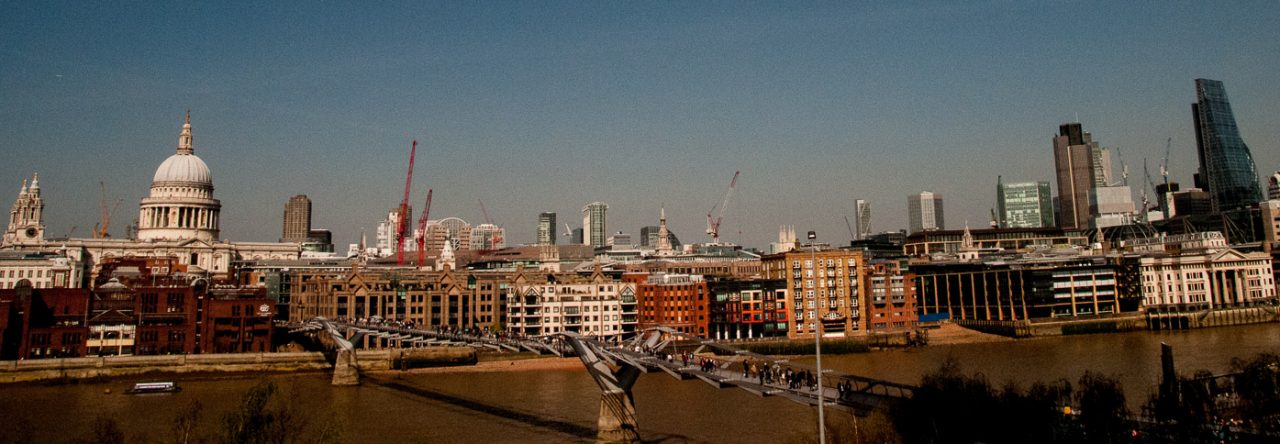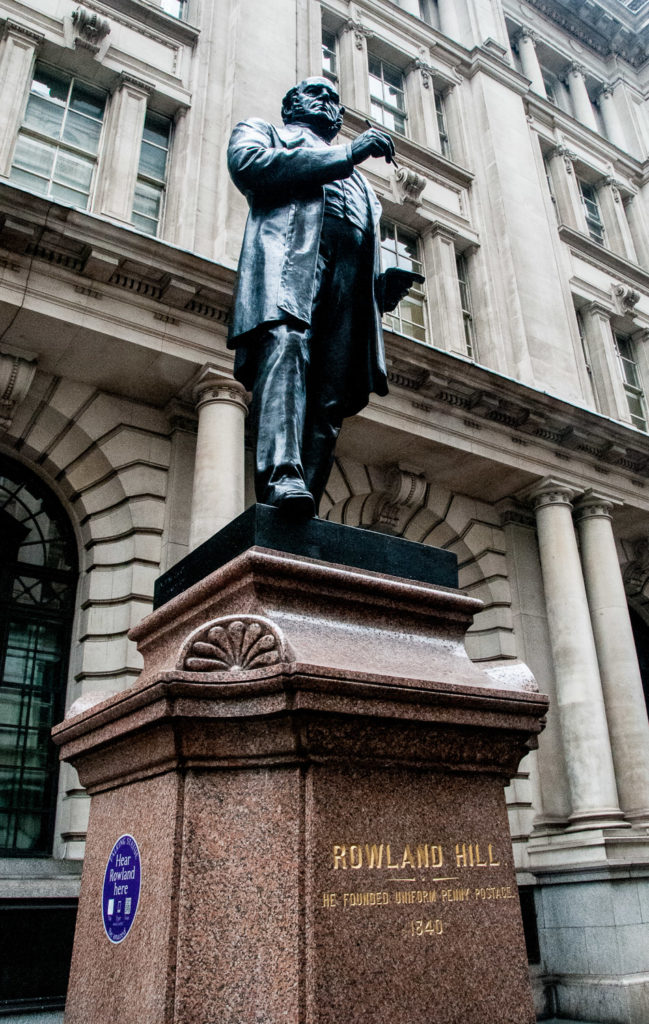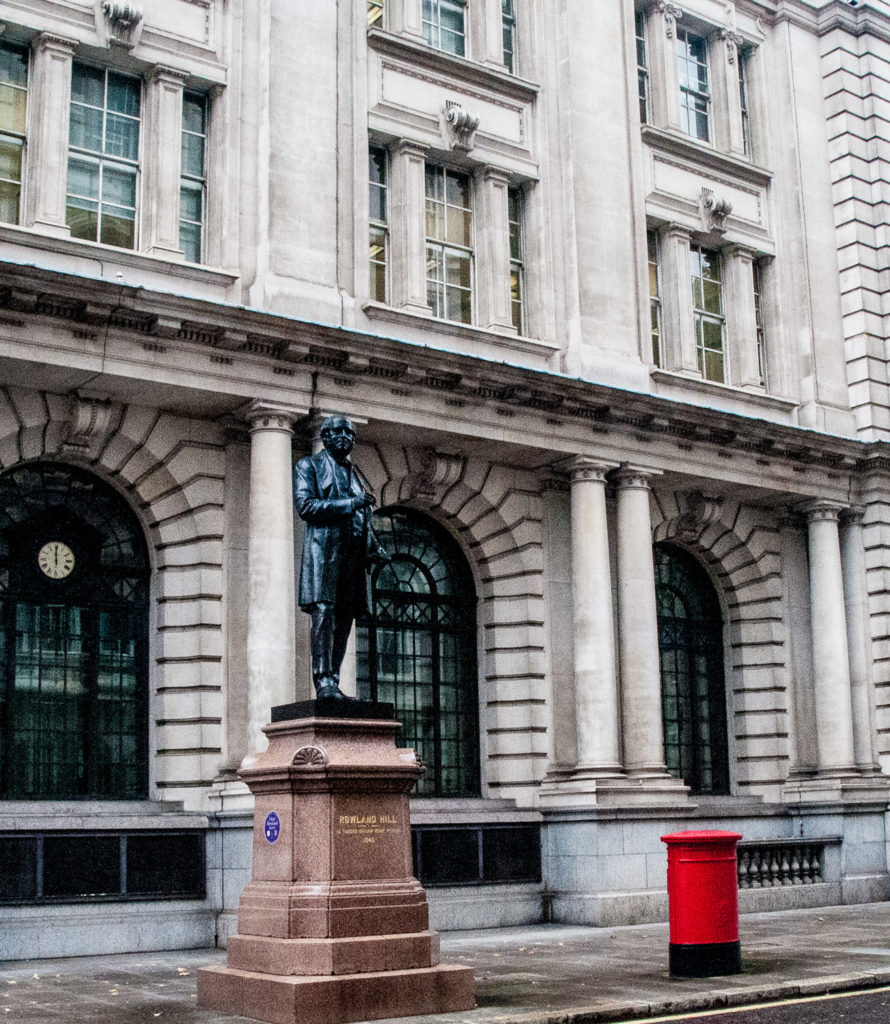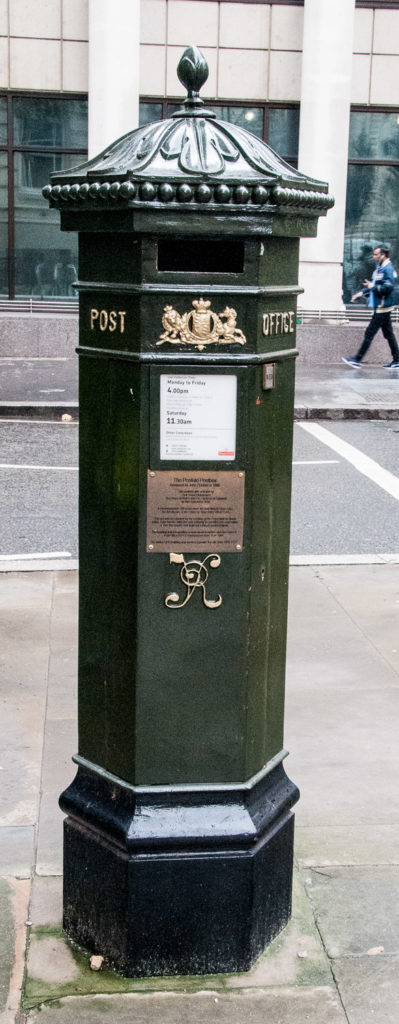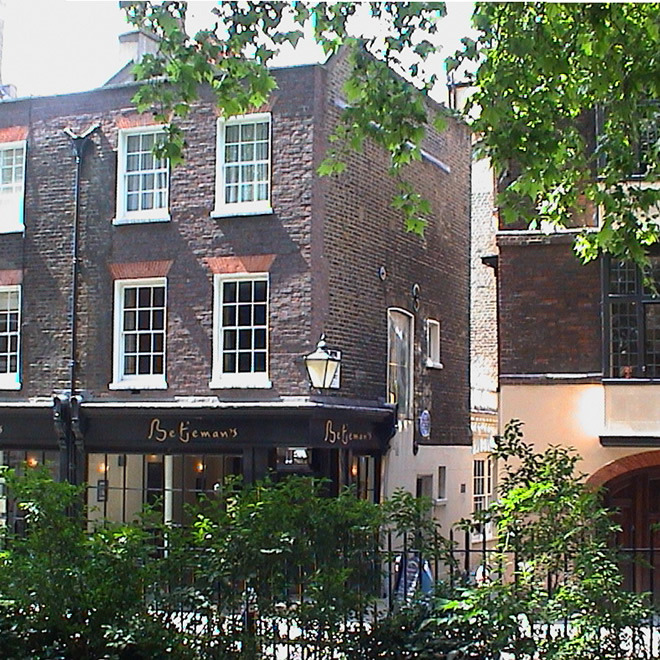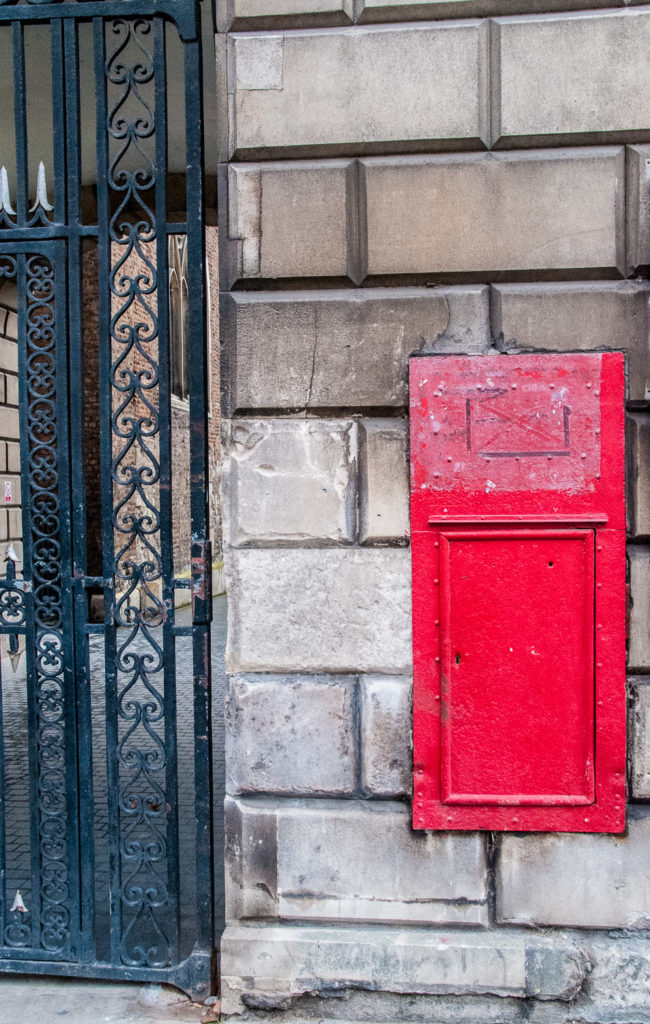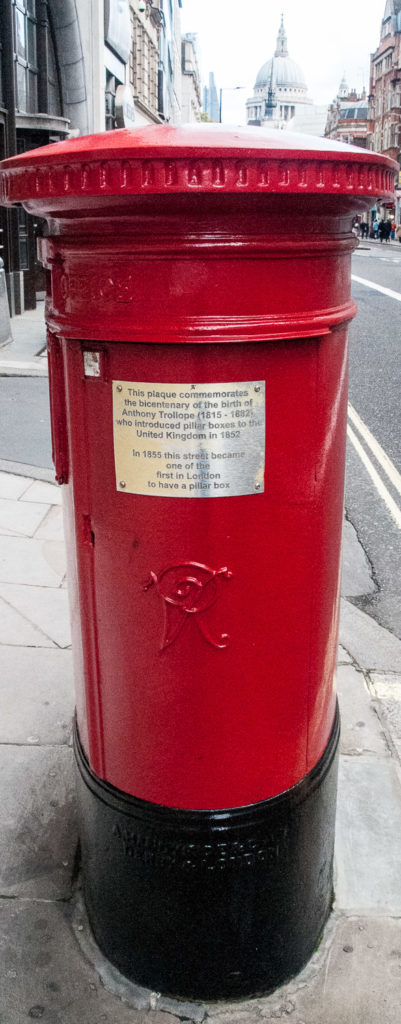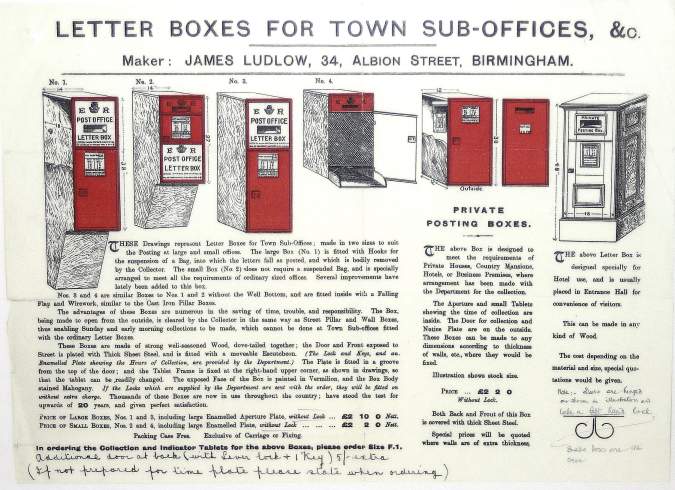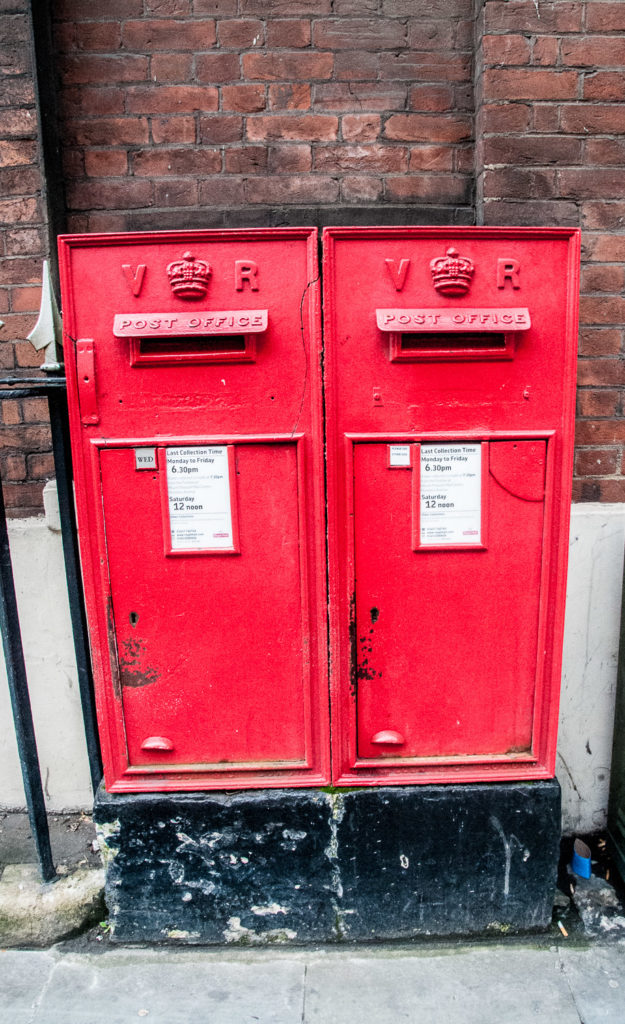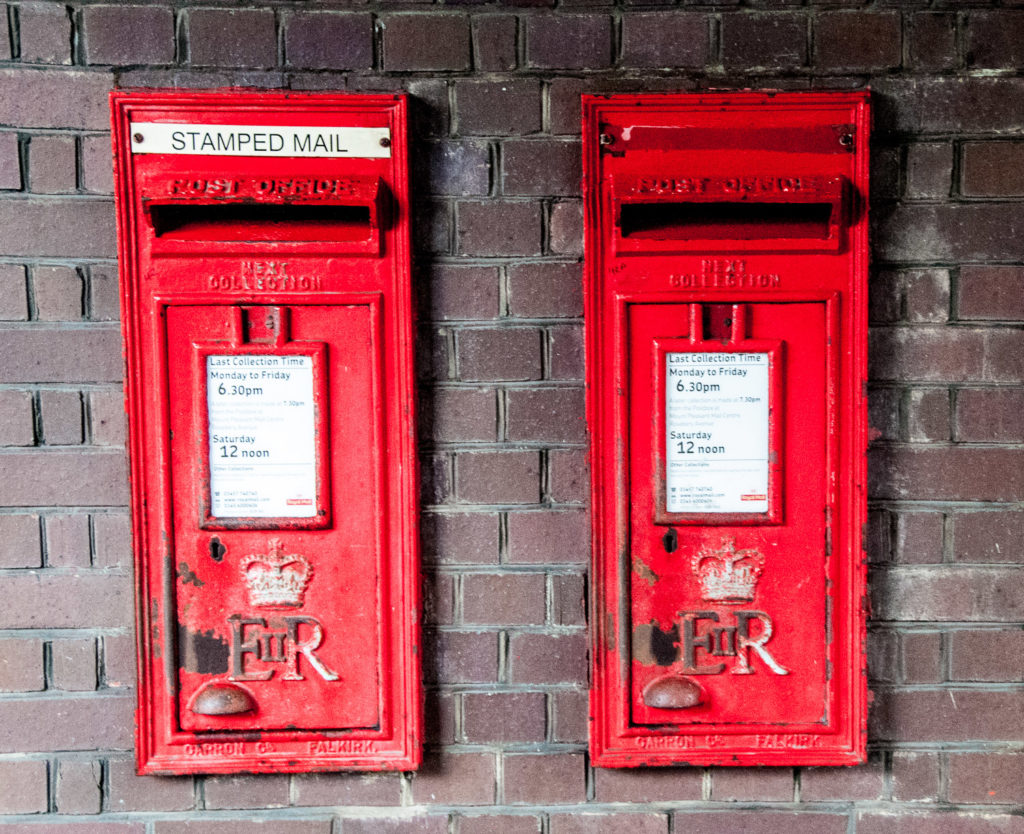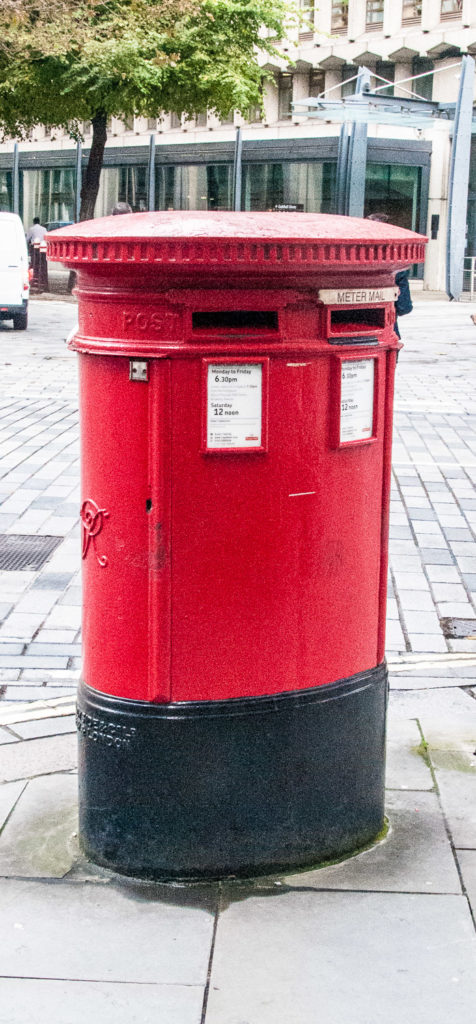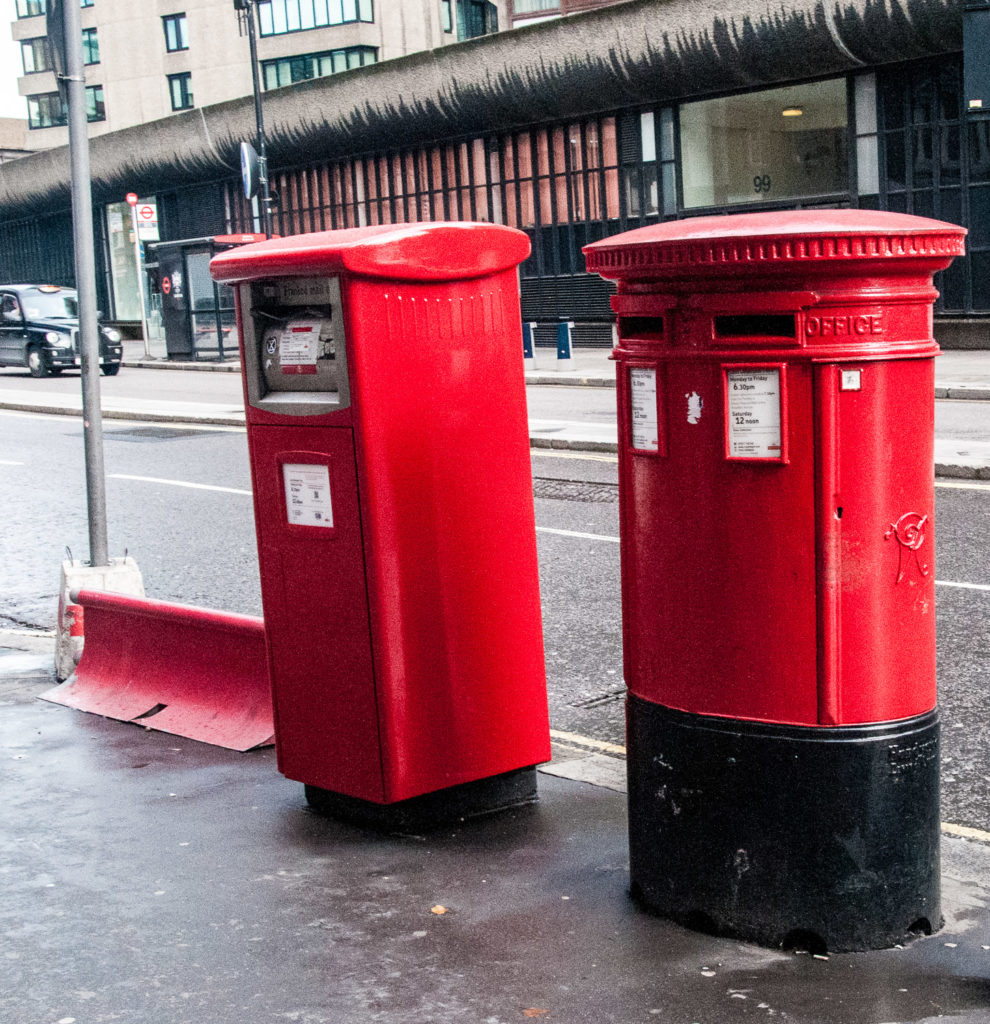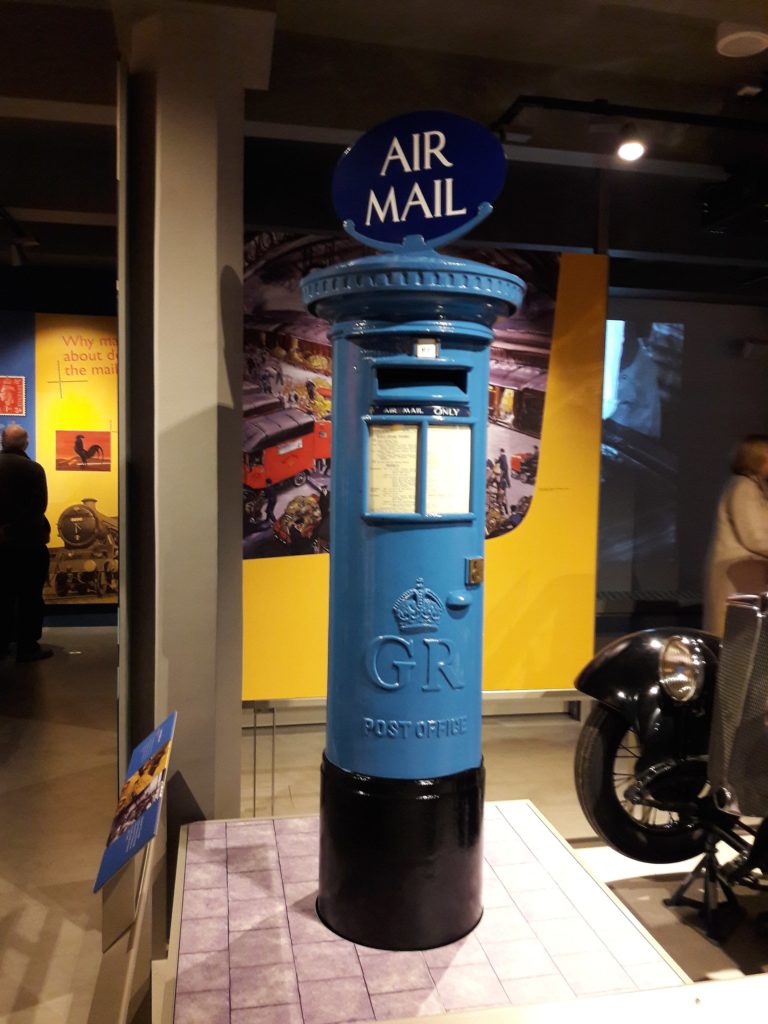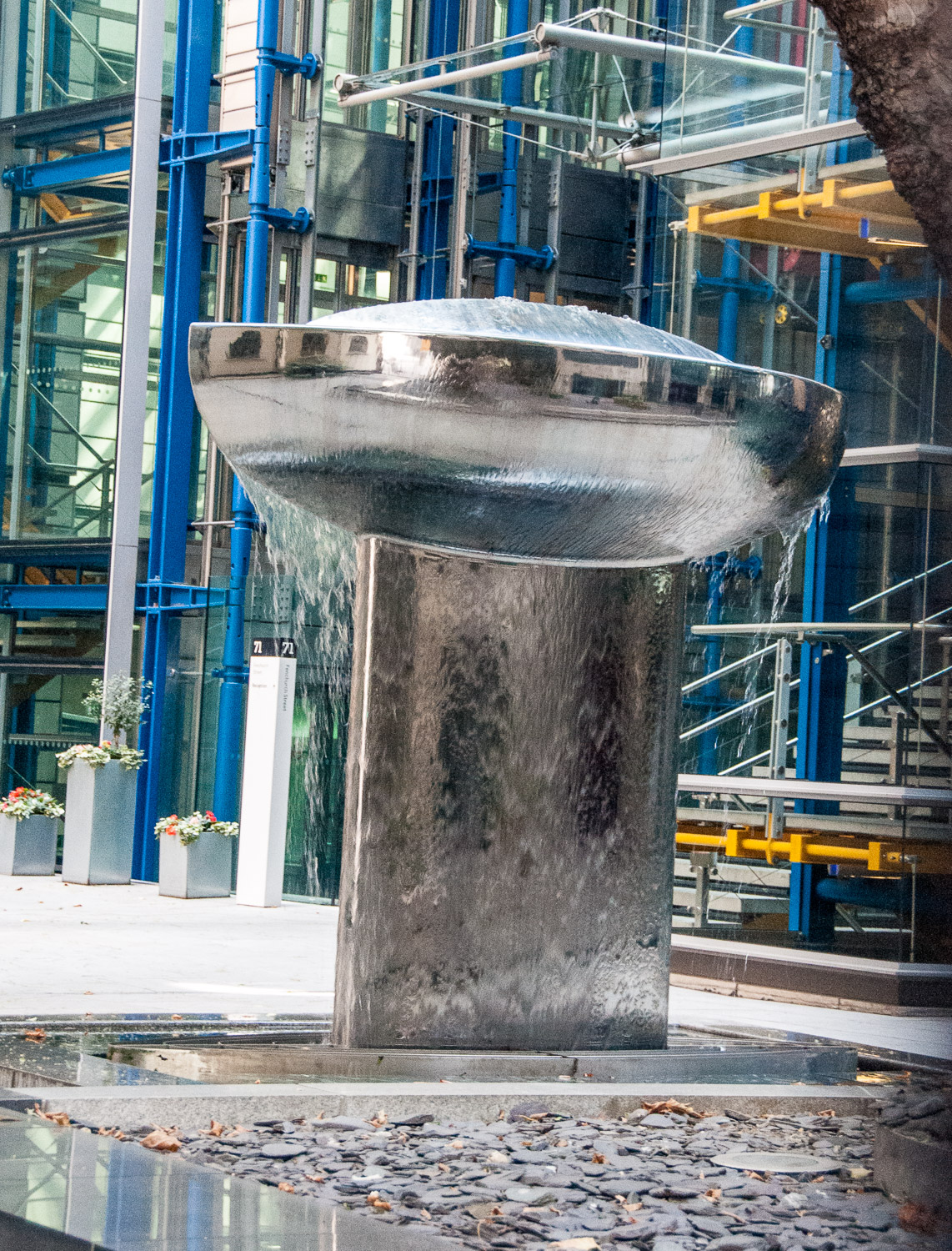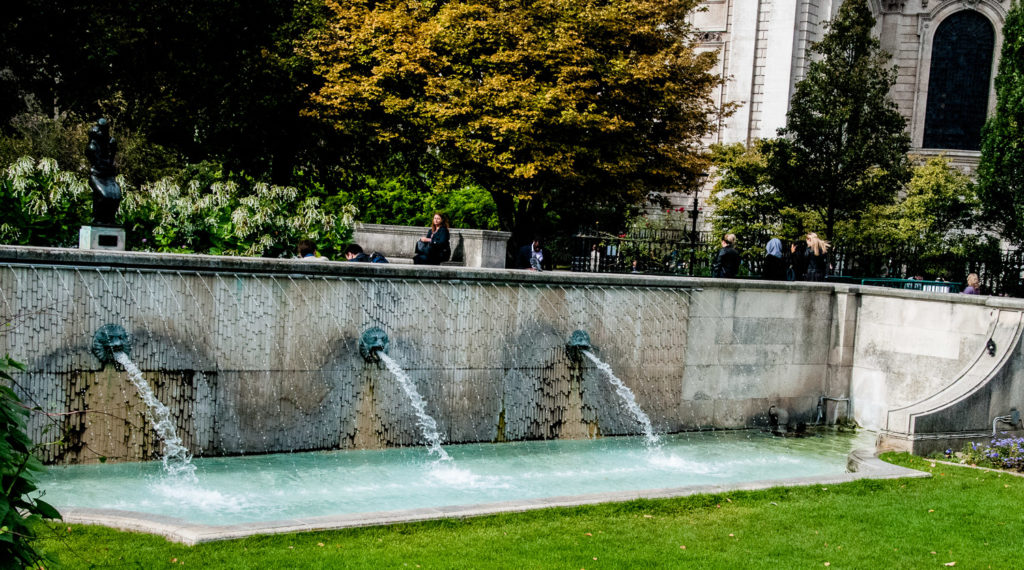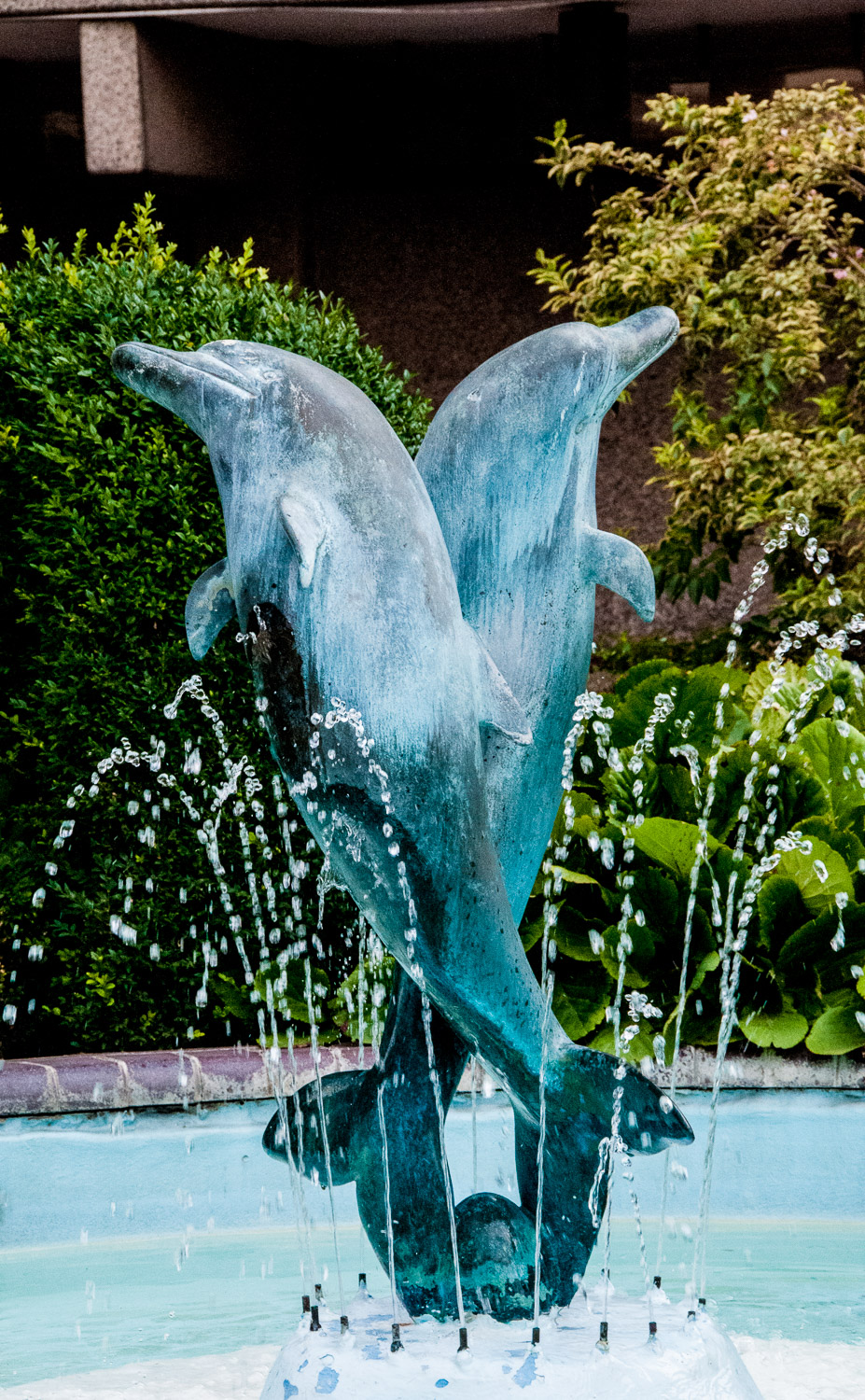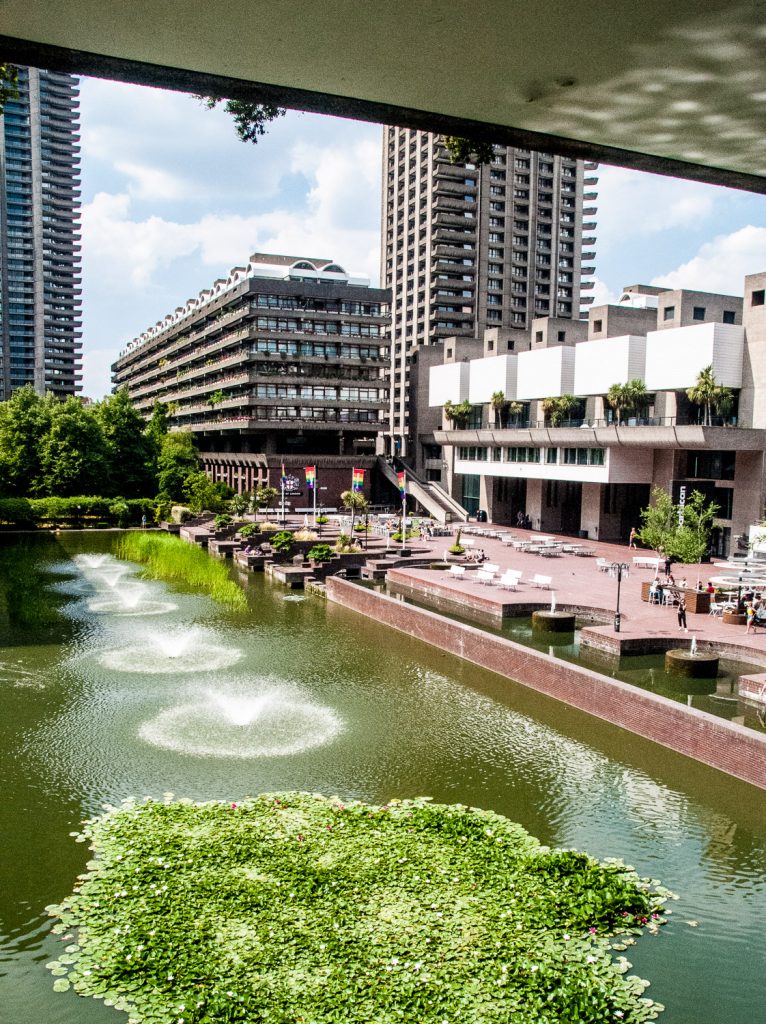As I walk around the City I often just take pictures with no particular theme in mind and it seems a shame not to share them so here is a random collection.
First up are a couple of Police Call Boxes that date from 1958. This one is in St Martin’s Le Grand …
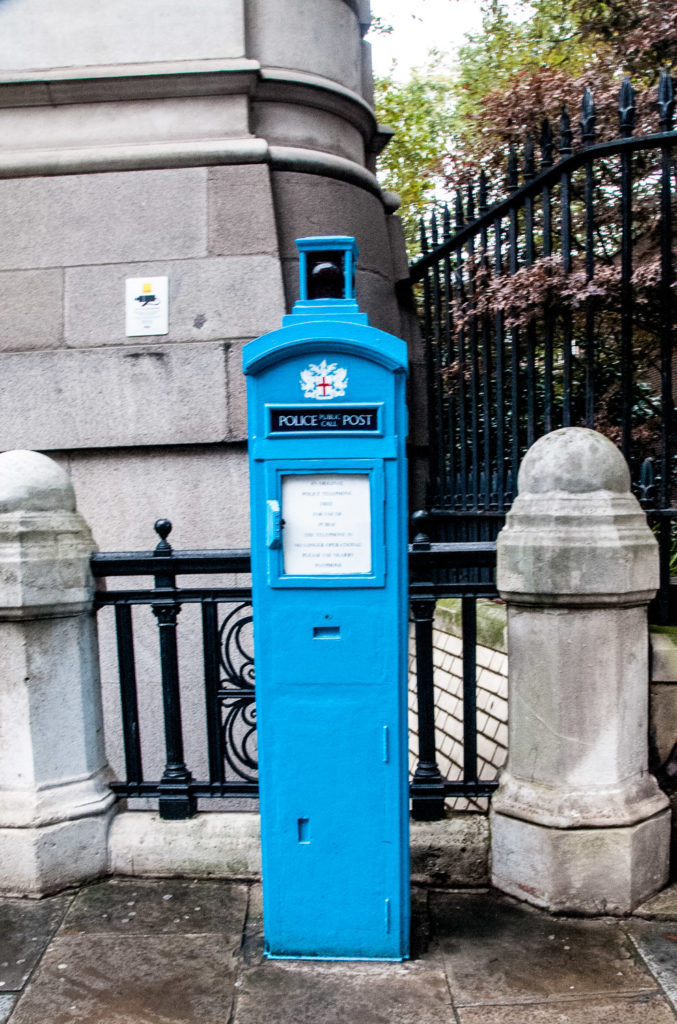
And this one alongside St Lawrence Jewry in Guildhall Yard …
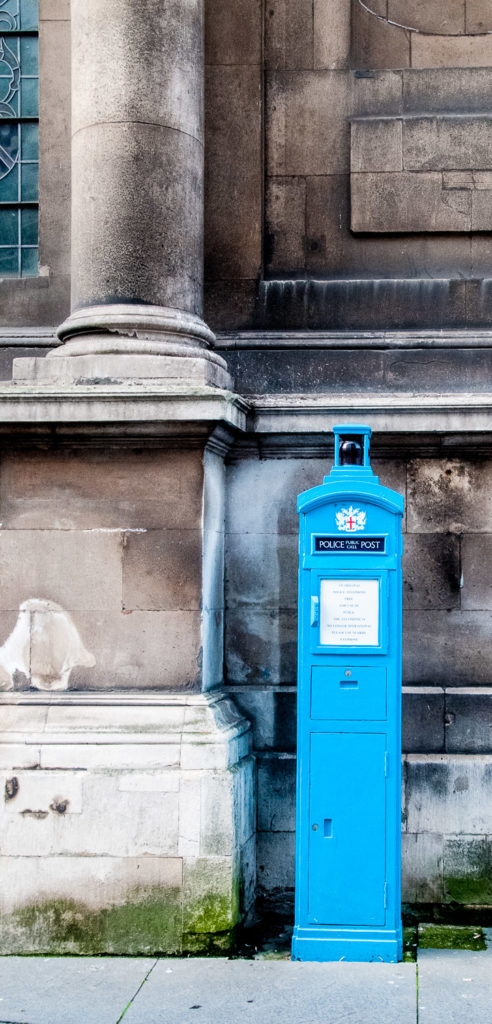
Along with the well-known TARDIS boxes the Metropolitan Police Service’s network of call boxes included the smaller Police Public Call Post, designed for the City’s narrower streets. Originally they were fitted with a telephone, a compartment for a first aid kit, and a large light attached directly or using a pylon to the top of the post. Once there were over 70 of them but they were gradually removed from 1969 onwards and these are the only two I have come across in the City. Incidentally, there are no longer any TARDIS boxes anywhere in London apart from when Dr Who is visiting (as of course you know, TARDIS stands for Time and Relative Dimensions in Space).
If you want more information there is a book by John Bunker called The Rise and Fall of the Police Box and you can read more about Dr Who and his time travelling machine here.
I liked this glimpse of a chandelier in the Goldsmiths’ Company building on a dull rainy day …

I have written before about Cliffords Inn Passage and how spooky it is with little natural light and the wall-mounted ‘deflectors’ designed to deter male misbehaviour and protect the brickwork …
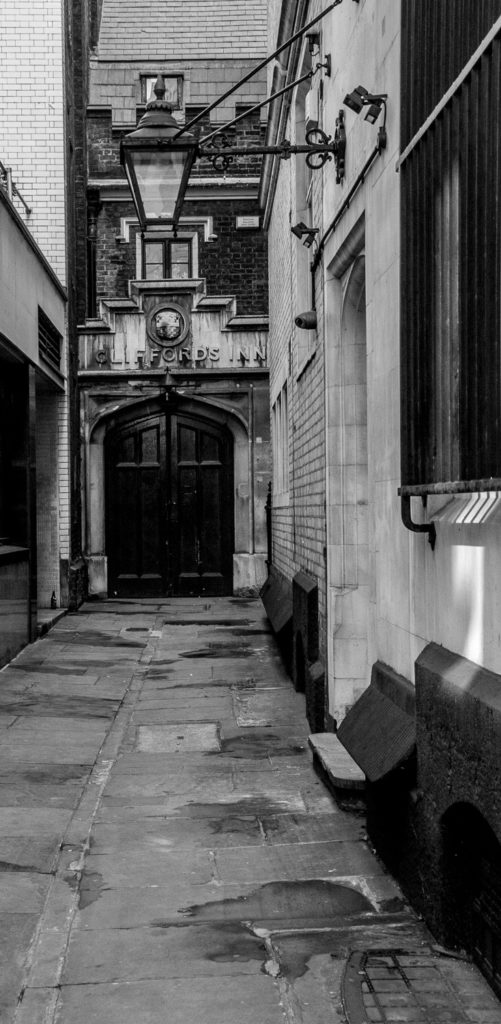
Because I do most of my photography at the weekend the imposing doors at the north end have always been closed but last week they were open and I was able to take a cheerier view looking towards Fleet Street …
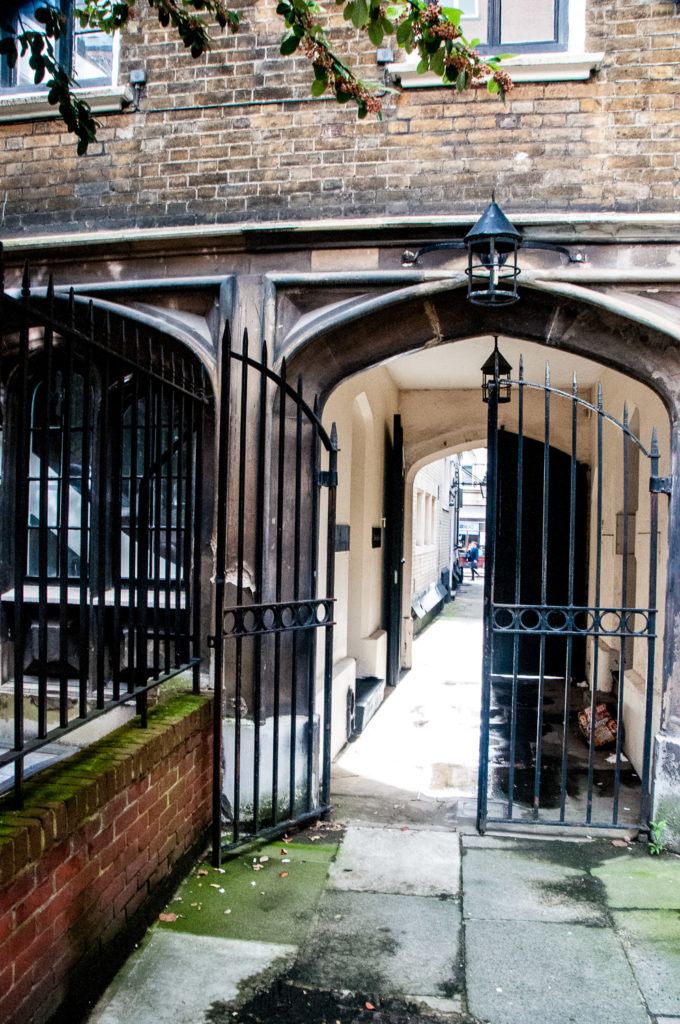
I like this shot which contrasts the blue paint of the subway entrance with the bold red facade of the Leysian Mission (which one day I shall get around to writing about) …

153 Fenchurch Street is squeezed between two glass office blocks but happily has survived 20th century redevelopment and contains this pretty cartouche. It shows two men fishing under a ribbon signage stating ‘Established 1740, Tull, 153 Fenchurch St.’
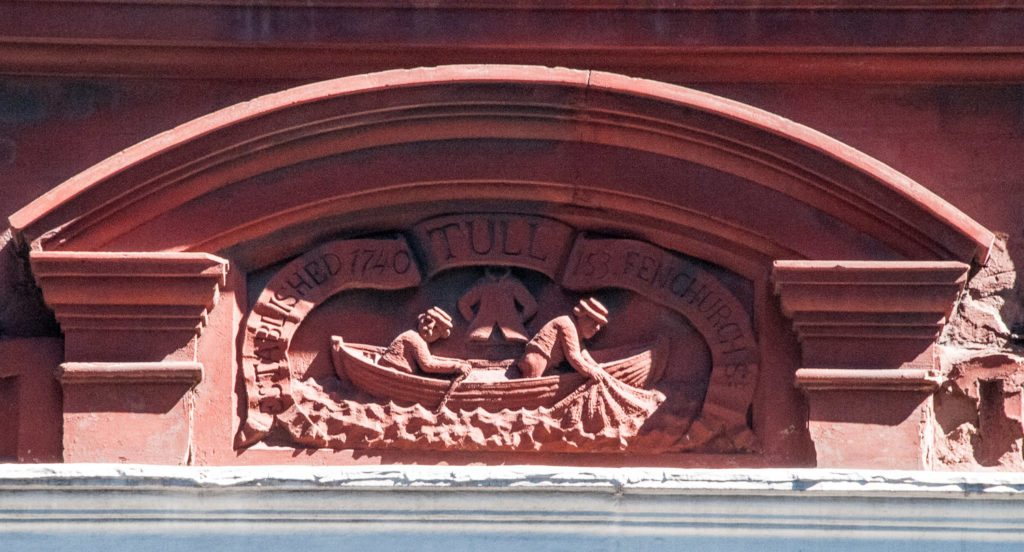
I am indebted to the London Remembers website for this information …
From Some Notes on the Ward of Aldgate (1904) “Messrs. SAMUEL TULL & Co., 12, Creechurch Lane, Rope, Line, Twine and Net Makers, established over 164 years. Originally at the sign of the “Peter Boat” (after the Apostle Peter), on Fish Street Hill, from there to 153, Fenchurch Street, and then for many years at 97, Leadenhall Street {now demolished}. They have a large number of customers of long standing — many of whom are of the same old school as themselves, the beginning of whose accounts go back for generations.”
I have also written before about Change Alley and its intriguing history. This plaque inspired me to do a bit more research …
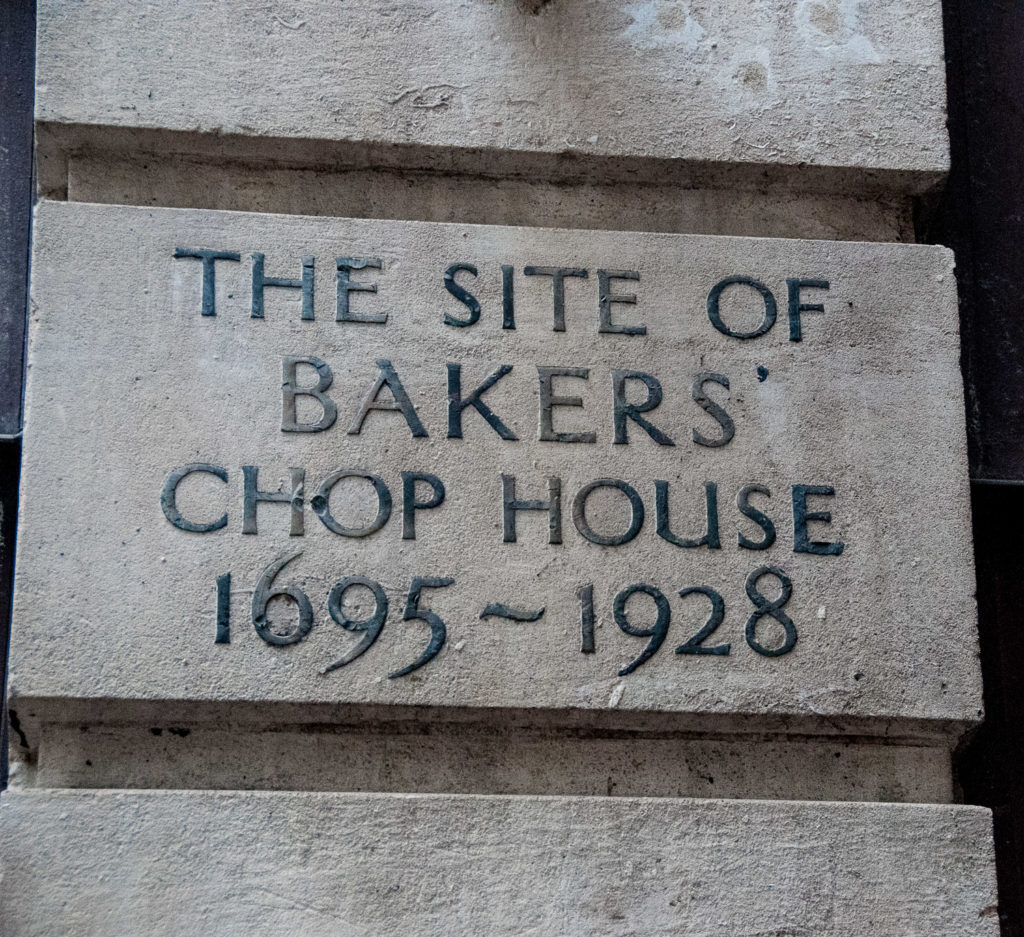
Here it is some time in the 19th century …

Eventually it was swallowed up as Martin’s Bank expanded and bought local freeholds. There is an interesting history of the Bank and the local area which you can find here. It looks like it was written in 1969 and I think is a lovely piece of corporate memorabilia.
This carving is also in Change Alley but I have yet to work out what it represents. It looks like a church but not one I recognise …
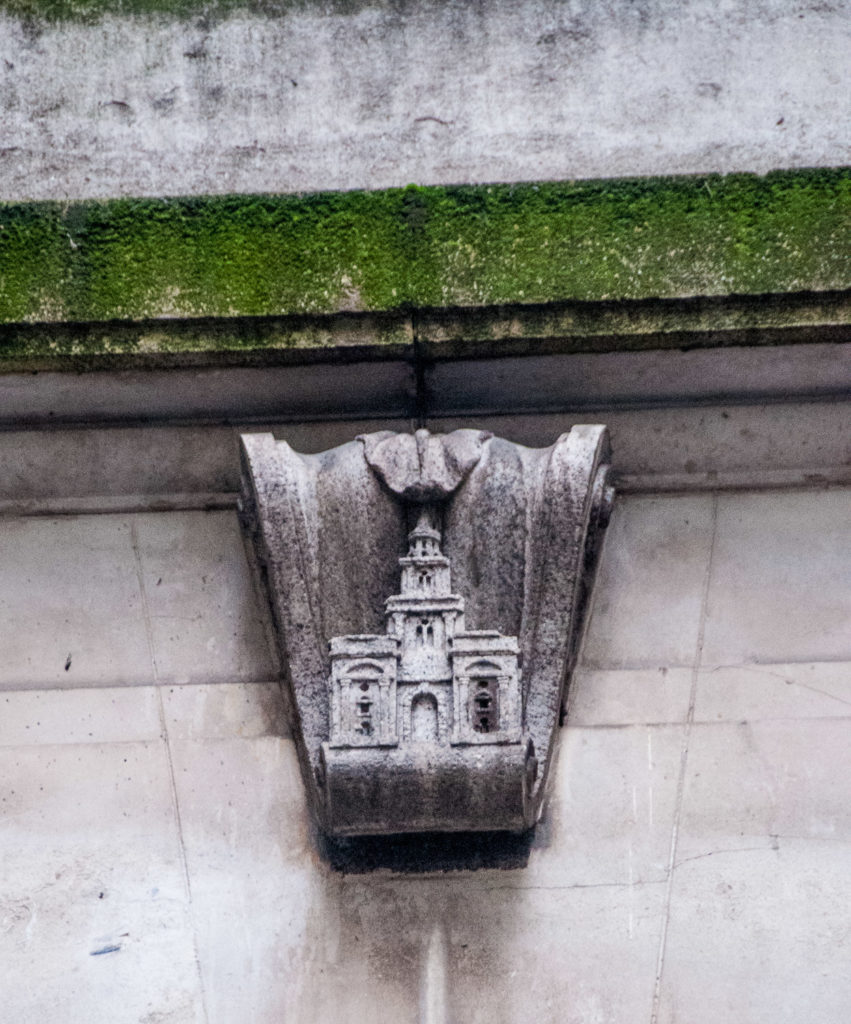
I really have tried to like the Walkie-Talkie but just can’t. Here it is looming over the 19th century masterpiece that is 33-35 Eastcheap …
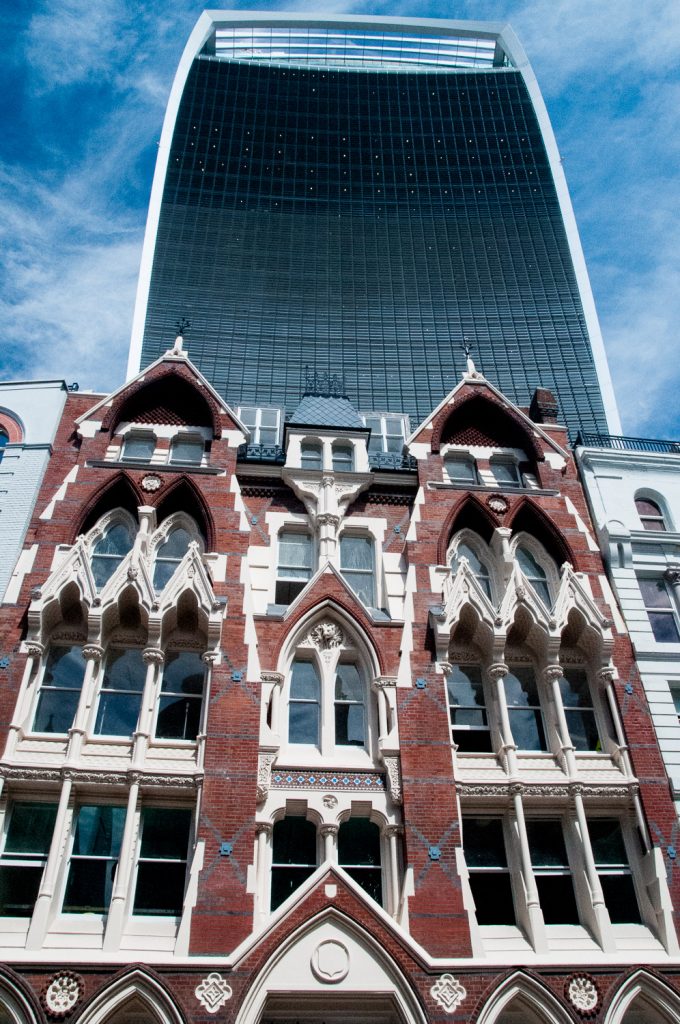
I like elephants and the doors of the Cutlers’ Company boast a fine pair (EC4M 7BR). The words are the Company motto Pour parvenir a bonne foy (To succeed through good faith) …
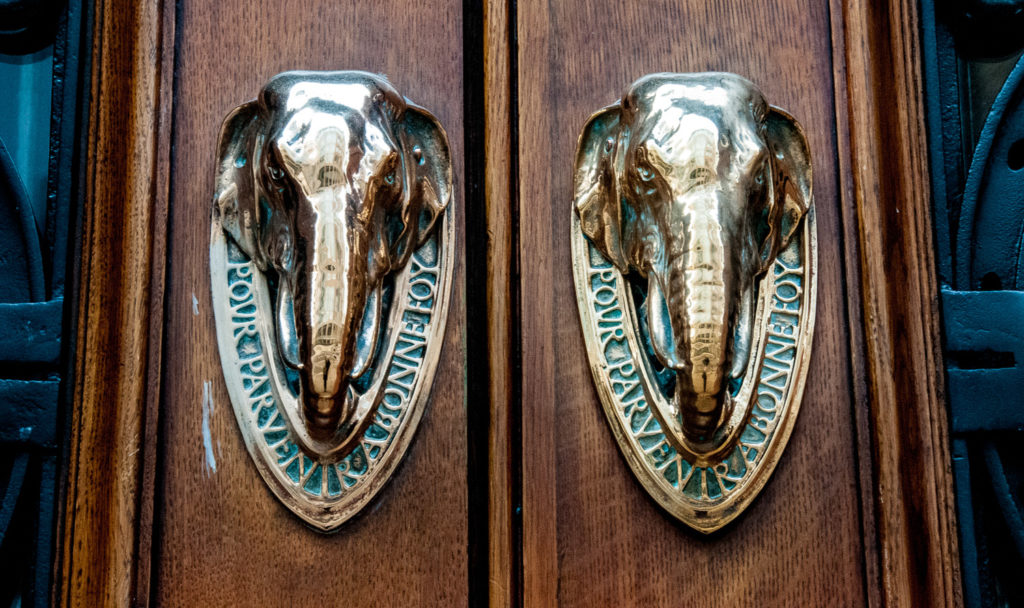
And finally, this sign on the wall of St Andrew by the Wardrobe is gradually disappearing (EC4V 5DE). Eventually no one will know that the key for the fire ladder is kept with the Sexton at nearby 52 Carter Lane …
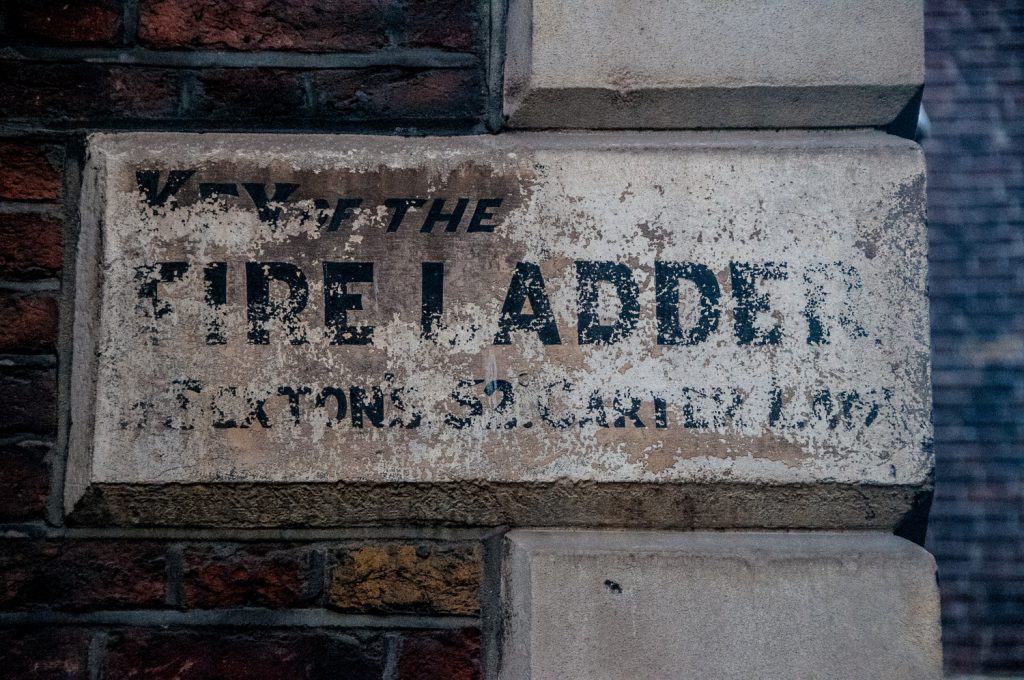
Don’t forget you can follow me on Instagram:
